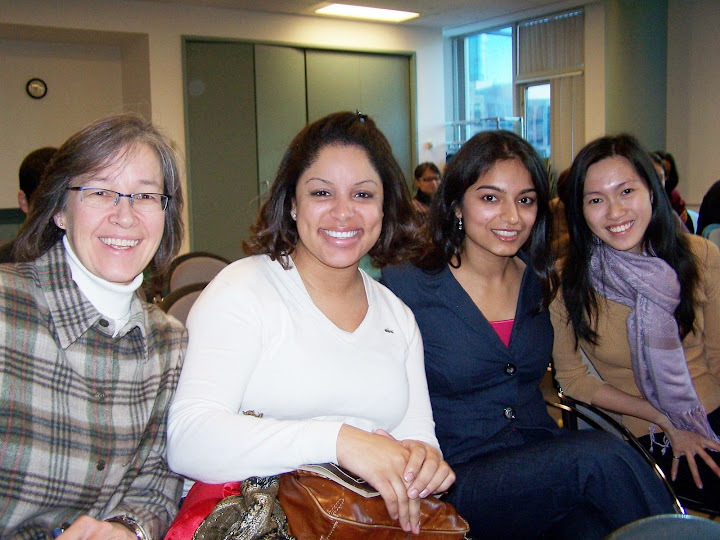About
Blog
Expect the Unexpected with Consulting January 6th, 2010
The opinions/views expressed by the author is theirs alone, and do not necessarily reflect the opinions or position of Endeavour.
Author: Tanya Rumble, Endeavour Consultant
A few weeks back my consulting team had the opportunity to meet with our client for our mid-term presentation. She graciously opened her home to us for this meeting, the purpose of which was to ensure that our consulting engagement was on track with our original statement of work. So, on a brisk Sunday morning in early December, our team of six meandered from our corners of the GTA and convened with our client in her North Toronto home. Little did we know that what was to be a standard PowerPoint slideshow with discussion would turn into a most interesting adventure.
We began our presentation with freshly brewed coffee and steeped tea, and mid-way through the presentation we were treated to freshly baked banana bread. As we progressed through the slideshow and were entering into productive dialogue about the direction of the project, our engagement manager’s ears perked up, and with eerie intuition, proclaimed that there was a tow truck outside our client’s home, towing her vehicle. How she came to this conclusion given that we were all engrossed in the presentation, our client’s feedback, and of course, the fresh baked banana bread is unknown to us all. Now we were all concerned with the fate of our vehicles. We rushed outside to find a city tow truck setting up to tow her car straight to the pound. With some quick jockeying of the vehicles, we were spared the tow truck, but not the fine. While it seems an odd anecdote to share, given the complexities for consulting, it is a most poignant analogy for the challenges that management consulting presents.
Endeavour has developed a consistent and comprehensive consulting methodology that leads to successfully completed project cycles. Each cycle consists of a new “round” of volunteers and clients. Consulting rounds consist of new and returning volunteers, and sometimes, returning clients, such as Food For the Poor Canada. Each project cycle is represented by three phases: 1) Pre-Engagement Preparation; 2) Consulting Engagement; and 3) Post-Engagement Evaluation. Notwithstanding this efficient linear approach, challenges do arise in any consulting environment. In my experience the biggest of those challenges are as follows:
1) Client Expectations: Many organizations, both for-profit and not-for-profit, try to do it all. When enlisting an external consulting team they view it as an opportunity to expand their scope of work and accomplish many of their ideas and goals. In the case of Endeavour, clients are forced to look critically at their vision and mission and define a project that is SMART (Specific, Measurable, Attainable, Realistic, and Time-bound). This reduces the potential for long-drawn out projects that are too broad, and simply not possible to complete, given the organizational capacity.
2) Understanding Client Needs: As consultants, it is often desirable to offer novel and progressive ideas to an organization. There are many great ideas. However, not all fit within the structure of an entity that has been set up to fill a specific need, provide a service, or deliver programming. It is imperative to consider the underlying and real needs of the client beyond what they indicate. For example, they might say they want a consultant to focus on building capacity while they really want to find long-term funding for the organization. It is important to read into what is stated and not stated to ensure what you are delivering is relevant.
3) The Big Reveal: While this is old hat to veteran consultants, it can be a common perception amongst new consultants. There is an innate need to wow the client, and present the final analysis and recommendations in a ‘big reveal’. However, the final presentation and report should come from hitting the mark and delivering exactly what you said you would; not from surprising the client with a revolutionary new direction for their organization. The element of surprise is not recommended, especially in the case of non-profit organizations that are reliant on government funding, and the support of foundations based on the specific programs and services they deliver.
Despite all the planning, and use of methodology, there are obstacles that will be faced in each and every consulting engagement. I am lucky to have only have had a run-in with the City of Toronto Parking Enforcement during my time with Endeavour, as the challenges of consulting are plentiful, and even more unique when working in the resource-constrained and innovative environment of non-profit organizations.

